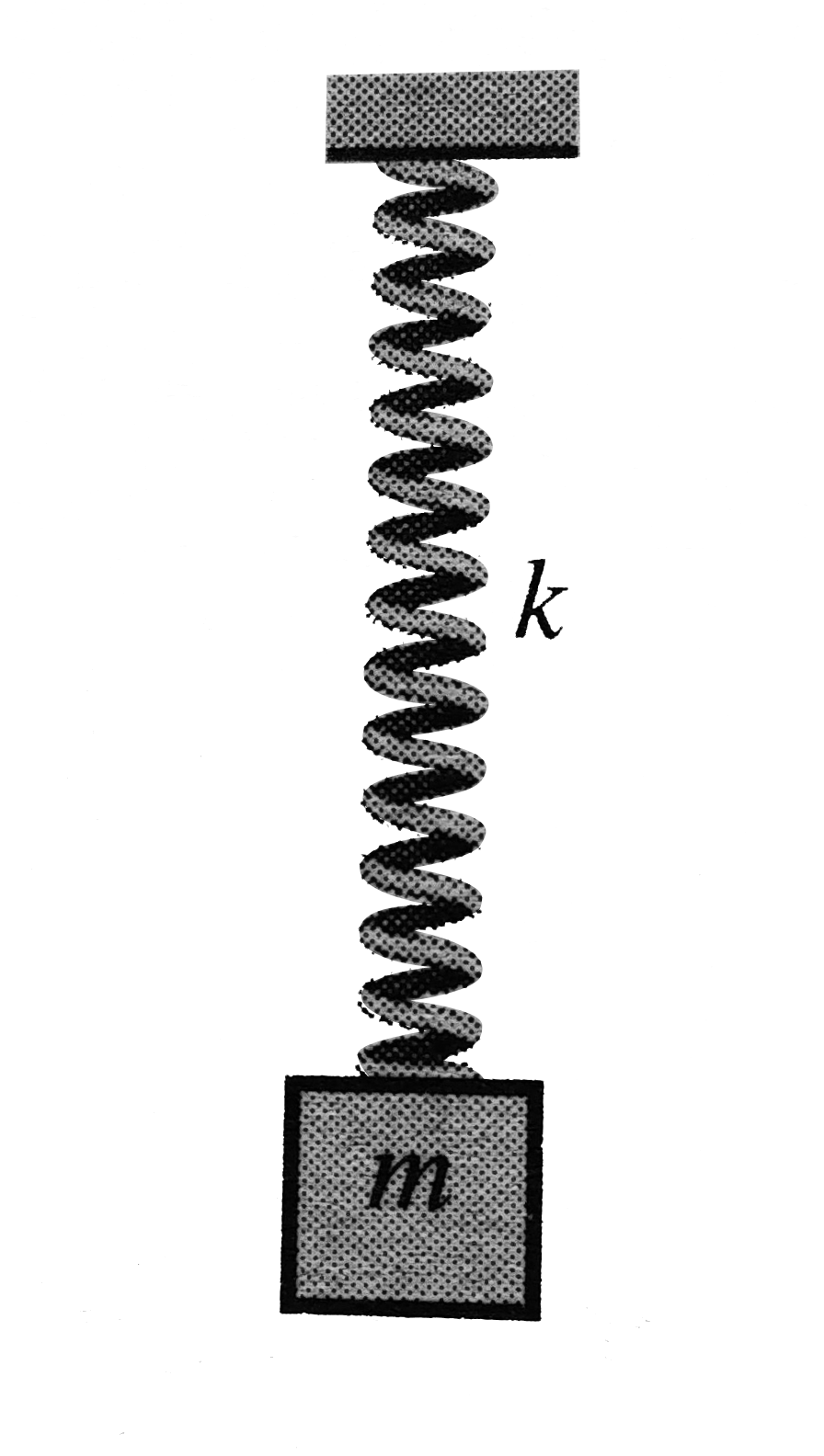A linear harmonic oscillator of force constant 2×106N/m and amplitude 0.01m has a total mechanical energy of 160J. Its
maximum potential energy is 100 J
maximum kinetic energy is 100 J
maximum potential energy is 160 J
minimum potential energy is zero
The correct Answer is:BC
To solve the problem step by step, we need to find the maximum potential energy and the maximum kinetic energy of a linear harmonic oscillator given the force constant, amplitude, and total mechanical energy.
Given Data:
- Force constant, k=2×106N/m
- Amplitude, A=0.01m
- Total mechanical energy, E=160J
Step 1: Determine Maximum Potential Energy
The maximum potential energy Umax in a harmonic oscillator is equal to the total mechanical energy E.
Umax=E=160J
Step 2: Determine Maximum Kinetic Energy
The maximum kinetic energy Kmax can be calculated using the formula:
Kmax=12kA2
Step 3: Substitute Values into the Kinetic Energy Formula
First, we need to square the amplitude:
A2=(0.01m)2=0.0001m2=10−4m2
Now substitute k and A2 into the kinetic energy formula:
Kmax=12×(2×106N/m)×(10−4m2)
Step 4: Calculate the Kinetic Energy
Now calculate:
Kmax=12×2×106×10−4
Kmax=12×2×102J
Kmax=100J
Final Results:
- Maximum Potential Energy Umax=160J
- Maximum Kinetic Energy Kmax=100J
Summary:
- Maximum Potential Energy: 160J
- Maximum Kinetic Energy: 100J
---
- Force constant, k=2×106N/m
- Amplitude, A=0.01m
- Total mechanical energy, E=160J
The maximum potential energy Umax in a harmonic oscillator is equal to the total mechanical energy E.
The maximum kinetic energy Kmax can be calculated using the formula:
First, we need to square the amplitude:
Now calculate:
- Maximum Potential Energy Umax=160J
- Maximum Kinetic Energy Kmax=100J
- Maximum Potential Energy: 160J
- Maximum Kinetic Energy: 100J
Topper's Solved these Questions
- SIMPLE HARMONIC MOTION Book:VMC MODULES ENGLISHChapter:SIMPLE HARMONIC MOTION Exercise:6-previous year question
Explore 56 Videos
- ROTATIONAL MOTION Book:VMC MODULES ENGLISHChapter:ROTATIONAL MOTION Exercise:JEE Advanced (Archive) (True/False Type)
Explore 3 Videos
- SYSTEM OF A PARTICLES & ROTATIONAL MOTIONBook:VMC MODULES ENGLISHChapter:SYSTEM OF A PARTICLES & ROTATIONAL MOTIONExercise:IN-CHAPTER EXERCISE F
Explore 10 Videos
Similar Questions
Knowledge Check
A simple harmonic oscillator has a frequency of 2.5 Hz and an amplitude of 0.05m. What is the period of the oscillations?
A0.4sB0.2sC8sD20s
A harmonic oscillation of force constant 4×106Nm−1 and amplitude 0.01 m has total energy 240 J. What is maximum kinetic energy and minimum potential energy?
View Solution
For the spring pendulum shown in fig. the value of spring constant is 3×104Nm and amplitude of oscillation is 0.1m. The total mechanical energy of oscillating system is 200 J. Mark out the correct option (s).
View SolutionPassage I) In simple harmonic motion force acting on a particle is given as F=−4x, total mechanical energy of the particle is 10 J and amplitude of oscillations is 2m, At time t=0 acceleration of the particle is −16ms2. Mass of the particle is 0.5 kg.
At x=+1m, potential energy and kinetic energy of the particle are
View SolutionPassage I) In simple harmonic motion force acting on a particle is given as F=−4x, total mechanical energy of the particle is 10 J and amplitude of oscillations is 2m, At time t=0 acceleration of the particle is −16ms2. Mass of the particle is 0.5 kg.
Potential energy of the particle at mean position is
View SolutionPassage I) In simple harmonic motion force acting on a particle is given as F=−4x, total mechanical energy of the particle is 10 J and amplitude of oscillations is 2m, At time t=0 acceleration of the particle is −16ms2. Mass of the particle is 0.5 kg.
Displacement time equation equation of the particle is
View SolutionForce acting on a particle is F=−8x in S.H.M. The amplitude of oscillation is 2 (in m) and mass of the particle is 0.5 kg. The total mechanical energy of the particle is 20 J. Find the potential energy of the particle in mean position (in J).
View SolutionA linear harmonic oscillator has a total mechanical energy of 200J. Potential energy of it at mean position is 50J. Find
(i) the maximum kinetic energy,
(ii)the minimum potential energy,
(iii) the potential energy at extreme positions.
View Solution

